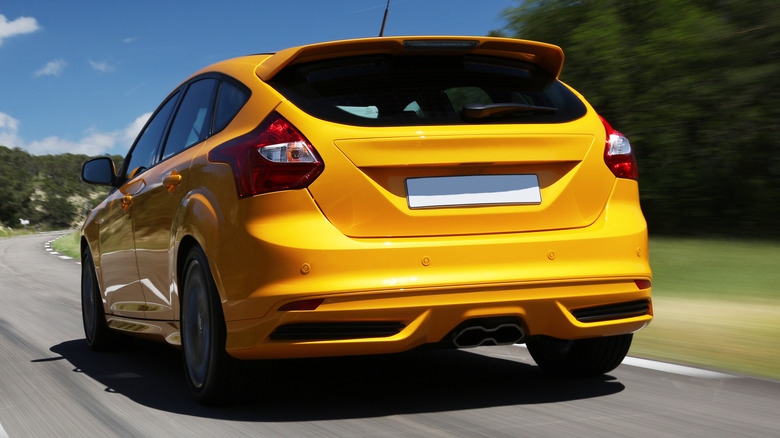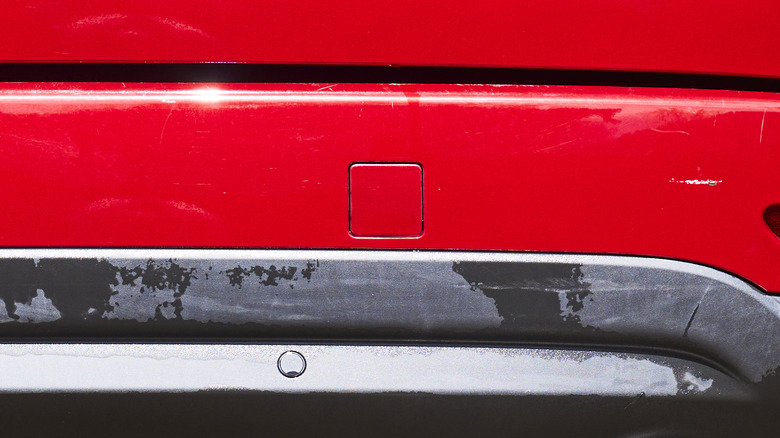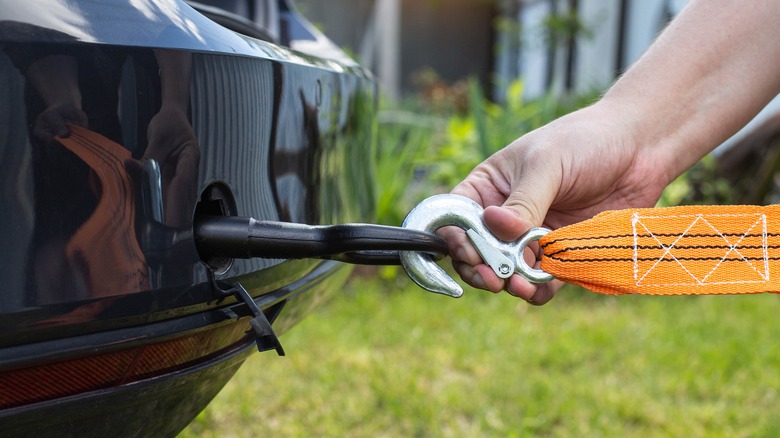Here's What Those Squares And Circles On Your Car's Bumper Are For
When looking over pretty much any car on the road today, the functions of most visible components are pretty easy to figure out. Door handles open doors, lights serve to let other drivers know you're braking or turning (although these actions can be indicated with hand signals if driving without them), the grill aids in engine cooling and the movement of air. At the same time, there are some aspects of one's car that aren't as easy to determine. One example is the squares and circles that are often seen on a vehicle's bumper that, at first glance, don't seem to do anything at all.
As it turns out, these seemingly random shapes on rear bumpers can actually come in handy. Speaking specifically to the circles, they're often visual indicators of backup sensors, which aid in ensuring when you drive in reverse that you don't run into any obstacles. Many of these systems use sonar to detect the distance from nearby objects, while some use infrared or radar to warn you of potential collisions. As seen in the above image, there are typically four sensors, evenly spaced across the back bumper. If your car doesn't have distance sensors, they can be hardwired in, ideally by a professional, for an extra layer of safety — one of many tech gadgets that can help make your older car feel newer.
That just about covers the smaller bumper circles, but what about the larger circles or squares?
Larger circles and squares tend to help out with towing
The mysterious squares or comparatively larger circles found on some vehicles are designed to be removed with little more than a flathead screwdriver or a similar tool to pop them out. They act as covers for the spot to attach a tow eye to a car or SUV.
With the panel removed, a tow eye can be screwed in so that a car can be properly pulled by a tow truck or lifted onto a tow truck's platform. Tow eye screw covers can be spotted on the front, back, or both of an automobile's bumpers. Tow eyes themselves typically come included with new and many used cars, situated in the trunk alongside the spare tire and other tools. It's not uncommon for the covers to be lost over time, though typically, replacements are pretty easy to find on the aftermarket.
Bearing in mind what the tow slot and its accompanying screw-in eye are for, some major misconceptions regarding their use should be addressed.
What to know about the limits of tow eyes
Having a slot for a tow eye to be screwed in is an incredibly convenient innovation for tow truck drivers. All they have to do is pop it open, screw in the tow eye, hook it up to their truck, and pull it along. At the same time, the inclusion of this technology on modern vehicles has led to some major misconceptions regarding its use. For one, it's not always regarded as the ideal option for towing, with some vehicle manuals going as far as to caution against using it as anything other than a last resort. For the sake of the car, it may only be ideal for short distance towing at low speeds.
"Loading eye bolts have minimal strength for side force. They're just designed to pull straight ahead, and only if the vehicle is still in an adequate condition to roll, i.e. still has 4 wheels/tires," explained Larry Muzamel, the at the time Executive Director of the California Tow Truck Association, in a 2013 conversation with Slate. In that same vein, they're not the best choice for yanking a car out of a ditch or through tough mud. There are lots of great new pickup trucks for towing out there today, so if you want haul with your vehicle, it's best to go with one of those over a sedan with an attached tow eye.
Though they're not overly obvious, backup sensors and tow eye slot covers are some of the many convenient and safety-enhancing elements of modern automobiles — so long as you use them correctly, of course.


